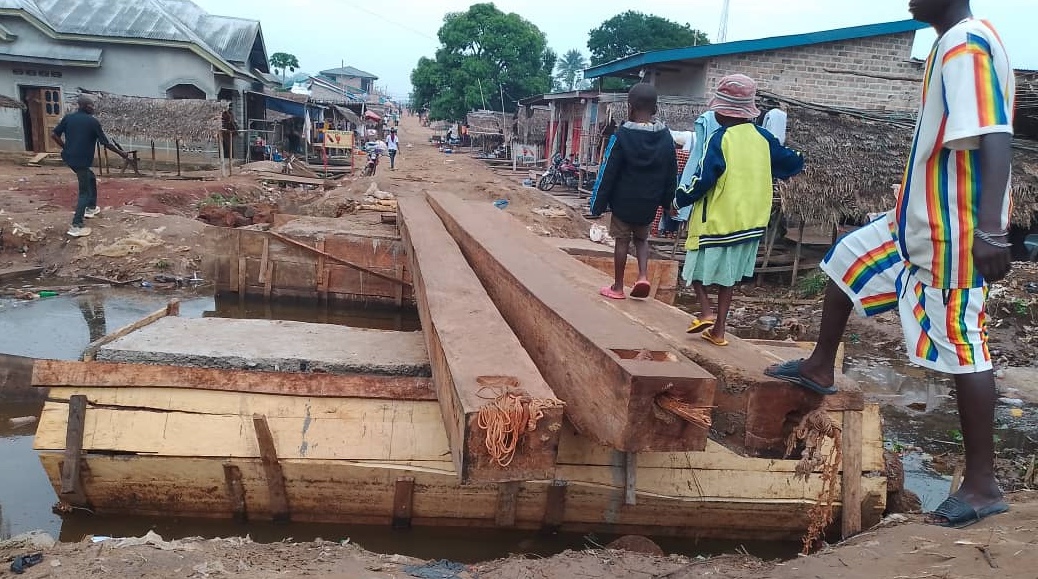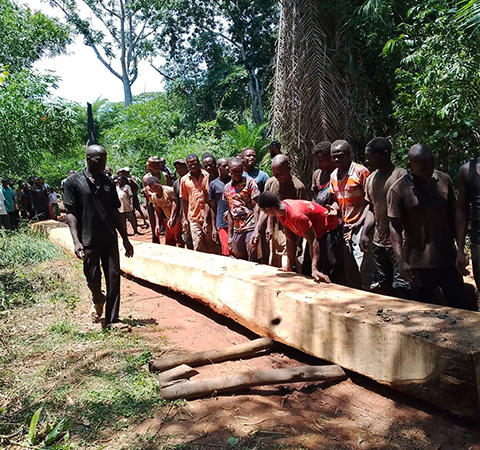Rebuilding Bridges, Rebuilding Lives: AWF’s Support for Infrastructure in Remote DRC Communities

In rural areas of the DRC, a bridge like this one can transform conservation—and people's lives. ©AWF/Rachel Emisave
In the remote Bili-Uélé landscape of the Democratic Republic of Congo (DRC), the challenges of conservation go far beyond protecting wildlife. The region’s fragile infrastructure—especially its dilapidated roads and bridges—makes it nearly impossible to patrol protected areas, deliver essential goods and services, or even connect isolated communities.
But, with support from the European Union, this is slowly changing. Through the NATURAFRICA program—and with strong leadership from the African Wildlife Foundation (AWF)—15 bridges across key routes in Bili-Bondo and Bili-Adama have been rehabilitated. This infrastructure upgrade is not just a lifeline for conservation—it’s a game-changer for the people who call this landscape home.
Why Infrastructure Matters for Conservation
“The roads in these areas are in terrible condition, and the wooden bridges built by communities are often so fragile, they barely last a season,” explains Emmanuel Domba, AWF’s Road Technical Assistant. “Although repairing infrastructure isn’t our primary mandate, we knew that restoring these bridges would help both conservation efforts and local communities. So we stepped in.”
These bridges are vital for eco-guard patrols, wildlife monitoring, and responding quickly to poaching threats. Poor infrastructure has long slowed down or blocked such efforts, undermining both ecosystem protection and community safety.
"There’s a 15-meter bridge on the Bili-Adama route that used to take us nearly 45 minutes to cross. That’s time we could be used to stop poachers or respond to emergencies," says Jean-Claude Agbakazinde, an eco-guard and anti-poaching officer in the area. "Now we can cross it in minutes."

Students can travel safely thanks to restored bridges like this one. ©AWF/Rachel Emisave
Powered by Local Hands and Heart
Community participation was at the heart of this effort. Working closely with Local Conservation and Development Committees (CLDCs), AWF and local leaders mobilized hundreds of residents to volunteer their time and labor.
“Once a bridge site was identified, we’d meet with local leaders, explain the project, and work with them to mobilize people and identify suitable timber,” says Domba. “Sometimes 50 to 100 community members showed up to help—working for days with nothing more than meals to sustain them.”
Women participated too, playing a key role in this community-led effort. “Even if the number of women was small, their involvement was powerful and symbolic,” says Merveille Elikya, AWF’s Community Conservation Lead in Bili-Uélé.
Infrastructure Transforms Conservation. It Also Transforms Lives.
These bridges have also had a significant impact on local health and economic well-being. In the past, delivery trucks carrying medicine or food often faced delays of days—or even weeks—because of collapsed bridges.

Volunteers roll heavy timber on logs to construct a bridge. ©AWF/Rachel Emisave
“There were times we had to wait more than a week for medicine,” says Miki Mabenge, Chief of Bika. “The roads were so bad, drivers would either risk dangerous crossings or take long detours. People suffered because help couldn’t get through.”
Today, villages that were once isolated are now connected again. Students can travel safely, markets are accessible, and families can reach medical services more quickly. Even social ties are being renewed.
“Before, our neighbors couldn’t visit. Now, people are seeing each other again,” says Martin Mbauzele, head of the Zee groupement. “These bridges have reconnected us to the world.”
A Legacy of Hope and Resilience
For many elders, these restored bridges are more than infrastructure—they’re a symbol of hope.
“I'm 70 years old, and I’ve never seen this bridge rebuilt by anyone but us,” says Mambu Mia, a resident of Zee. “I used to beg my children not to cross it because it was so dangerous. Now, thanks to the conservationists, I finally feel safe.”
As Elikya puts it: “A bridge is more than just wood and nails. It’s a connection—between people, between ecosystems, and between today and a better future.”
Story Map: Explore How Conservation Brought Security and Resilience to Bili-Uélé